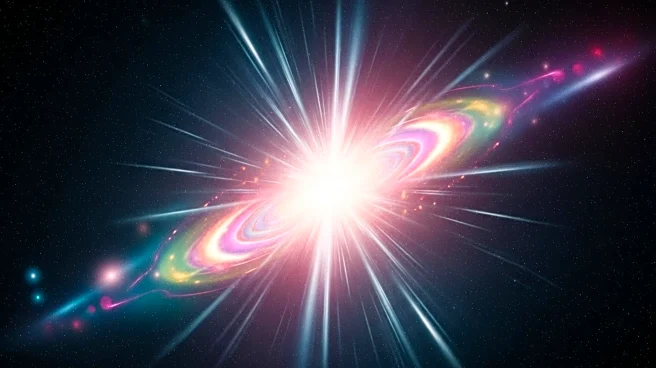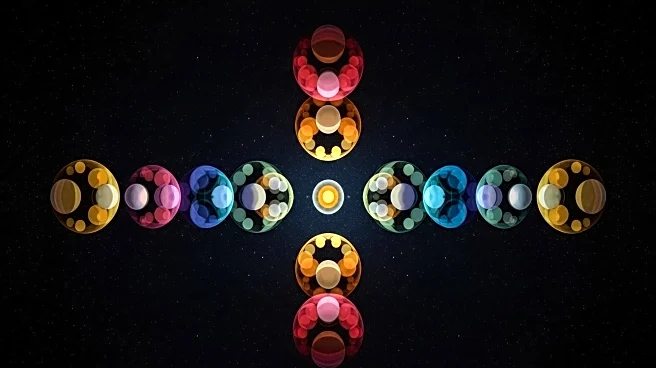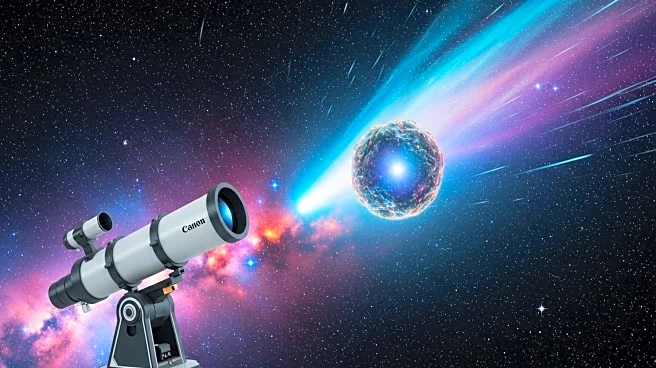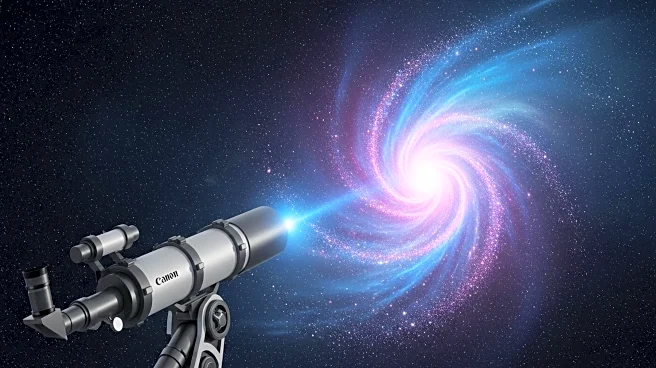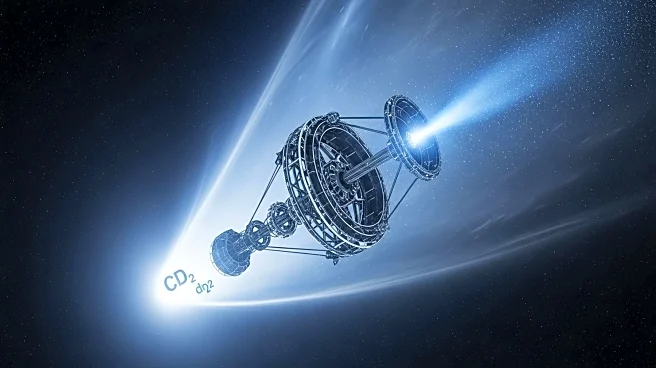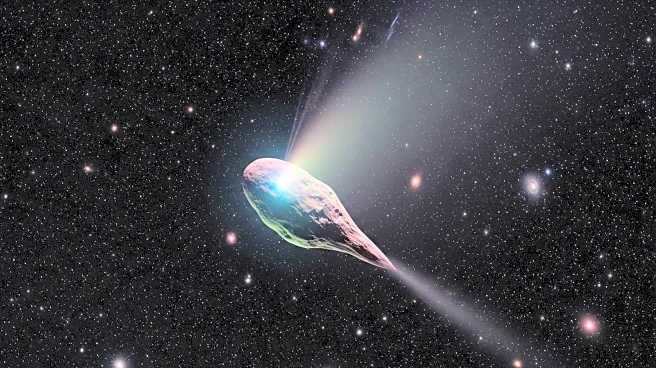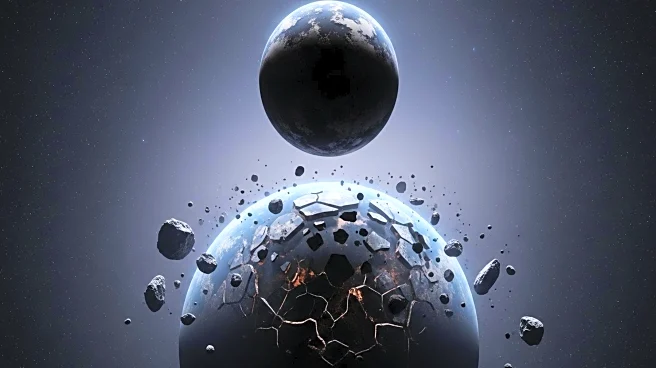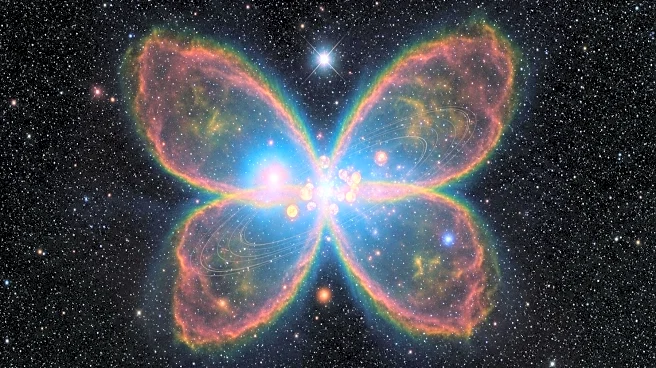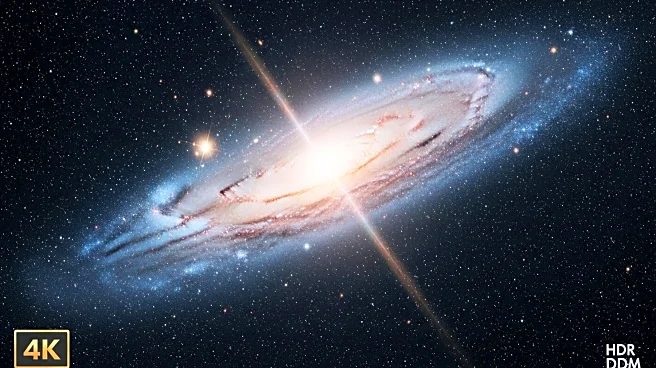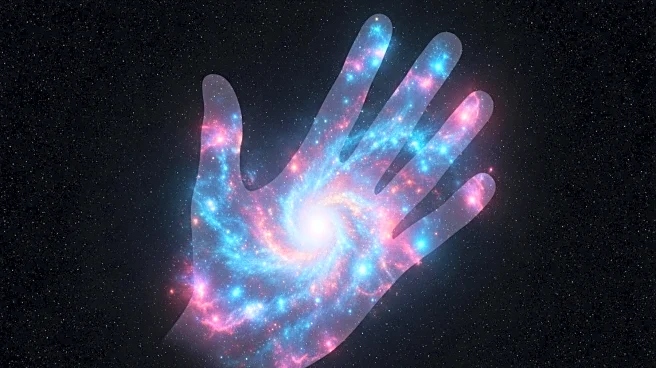Rapid Read • 8 min read
Astronomers have successfully traced the origin of the brightest known fast radio burst, FRB 20250316A, to the spiral galaxy NGC 4141, located about 130 million light-years away in the Big Dipper constellation. The burst, detected by the Canadian Hydrogen Intensity Mapping Experiment (CHIME), lasted less than one-thousandth of a second but carried more energy than the sun produces in four days. Using CHIME's new network of 'Outrigger' stations, researchers pinpointed the burst's location with unprecedented accuracy. This discovery marks a significant milestone in understanding these mysterious cosmic flashes, which have been detected since 2007 but often vanish too quickly to analyze.
AD
The ability to trace fast radio bursts to their precise origins opens new avenues for understanding the phenomena that cause these powerful signals. The discovery could lead to insights into whether these bursts are caused by dying stars, exotic magnetic objects, or other unknown sources. The pinpointing of FRB 20250316A's origin near a star-forming region suggests magnetars, super-magnetic dead-star remnants, as potential sources. This achievement highlights the growing capabilities of new telescope networks, such as the CHIME/Outrigger system, which function as a giant continent-wide telescope, enhancing the precision of astronomical observations.
With the CHIME telescope expected to trace hundreds of fast radio bursts each year, astronomers anticipate discovering more rare events and gaining deeper insights into the mechanisms behind these cosmic phenomena. The collaboration between ground-based observatories and the James Webb Space Telescope will continue to play a crucial role in following up on these bursts, potentially identifying more stellar companions or other sources linked to fast radio bursts. This ongoing research could significantly advance our understanding of the universe's most energetic events.
The discovery of FRB 20250316A's origin also raises intriguing possibilities about the nature of fast radio bursts. The fact that this burst may have been a one-time explosion suggests that multiple catalysts could trigger these events, with some bursts repeating often while others remain isolated. This variability adds complexity to the study of fast radio bursts and underscores the need for continued observation and analysis to unravel their mysteries.
AD
More Stories You Might Enjoy
